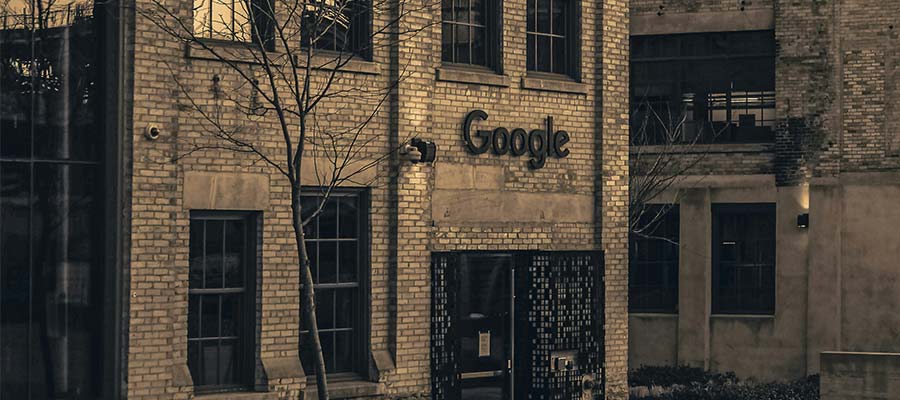The early web (we’ll define it as 1995 – 2005) was an adventurous place. The narrative was that anyone could participate in this new medium. Thus, it attracted an eclectic mix of creators.
We tend to look back to these days with some cringe. Yes, the design and technology of that era were lacking. And there were very few standards to speak of. But there were also plenty of positives.
I’m biased – my web design journey began in this era. Therefore, I have a lot of nostalgia. I’ve written about it a time or 10.
But there are things I miss about those days. Practices and ideas that defined the enthusiasm of the time. Things that have long since faded.
As such, here are some parts of the early web I’d like to see come back – even if only for a day!
The Absence of Big Data
So-called big data wasn’t prevalent in the 90s. Google would plant those seeds in the decade. However, the web was yet to be controlled by trackers and algorithms.
Perhaps we didn’t have the same level of personalization. So what? The side benefit was a lack of manipulation.
We still saw this in the early days of Facebook and Twitter. Remember when your feeds were all in real time? It provided a sense of witnessing things as they happened.
Early search engines had similar perks. You were likely served the same results as someone on the other side of the world. Less convenient? Sure. But also less intrusive.
What we see now is ultimately controlled by companies. We don’t necessarily see the best search results. We see whatever Google’s algorithm deems appropriate.
Social media companies make it harder to view your feeds in chronological order. And advertisements are a little too personal, in my opinion.
It’s easy to understand why things have changed. Manipulating users is a profitable business. Plus, advertisers want to target specific audiences.
Still, I miss the days when the web had more randomness. Stumbling upon something new seems like a lost art.
The Simplicity of Website Design & Structure
“Things were simpler back then.” That’s a common refrain when adults talk about their childhood. I think it also applies to web design and structure.
There’s a good reason for that simplicity. HTML was basic. CSS didn’t even exist for part of this time. And there was only so much we could do with the day’s technology.
I can’t deny the prevalence of poor design. Web design was new. We were all amateurs in a sense. I played a role in making the place a bit unruly!
Even so, the limitations were often a good thing. The dangers of overcomplicating things became apparent. Designers eventually learned that simplicity was better for everyone.
On the other hand, we had very few standards or best practices. Things like performance, security, and accessibility received little consideration.
Today, we tend to overcomplicate things as a default. We use heavy content management systems (CMS) for brochure sites. We make a mess of security. And we use DIY tools without much thought about portability or ownership.
Perhaps the good parts of modern design can stay. But how about a resurgence of simplicity?

The Impact of the Solo Entrepreneur
Entrepreneurship is still possible on the web. It’s the idea that an individual can make an impact with their creativity. That could be a product, service, or even great content.
I think it has become harder for individuals to succeed, though. There are too many mountains to climb.
Those algorithms make it harder to gain visibility. And there are so many people (and bots) competing for attention.
Not to say it was easy back in the day. But originality tended to shine through. Oddities like the Million Dollar Homepage are a prime example.
Early bloggers also had an opportunity to find a core audience. They built niche online communities dedicated to a shared interest.
Tools like WordPress make it easier to self-publish content. But reaching people has become a full-time job. Creators must often rely on sponsors and product placement to gain traction.
It used to be possible for content to spread organically. Search engines weren’t prioritizing big sites over small ones. Thus, anyone had a shot to be seen by potential followers.
What started as a side gig could turn into something more. That’s still possible in theory.
YouTube and TikTok are the flavors of the minute for this. But they are walled gardens. Doing something similar on an open platform is daunting.

The Freedom to Create and Connect
I love to think of the early web as uncharted territory. We couldn’t look to the past when populating this new medium. So, we made it up as we went along.
There were positives and negatives about this. Even then, some used the web for nefarious purposes. But they seemed like dark corners that were avoidable.
The bigger picture was all about freedom. Anyone could create and publish content. And the web would be a vehicle to make positive connections with others.
There was talk of the great potential it held for society. People without a voice suddenly gained one.
The biggest impediment at the time was access to technology. But that could be resolved through cheaper devices and widespread internet. The sky was the limit.
I believed in the web as a change agent. And that the world would be better for these newfound connections.
We haven’t quite gotten there. Repressive regimes have stifled free speech. Bot farms spread misinformation and create division. Large corporations make the rules with little oversight.
The web didn’t become a whole new world. It instead became a reflection of the one we already had.
Say it isn’t so, Tim Berners-Lee.

Letting the Past Guide Us
Here’s the good news: We now have a past era to look to. We can use it as a guide when building the web’s future.
I don’t expect Google, Facebook, or Twitter/X to change their ways. Not without the mandate of a governing body. But we also don’t have to follow their lead.
Those of us who build and publish can keep the ideals of the early web alive. Think of them as small pockets of resistance.
How do we do it? We can start by embracing open tools and platforms. Use a browser that focuses on user privacy. Publish with a CMS that gives you ownership. Support decentralized systems like the Fediverse.
Most of all, pass these lessons to the next generation. They haven’t experienced a truly open web. Show them why it’s worth having.
Perhaps the web was bound to be changed for the worse. But we can still use our little corner of it as a beacon of light.
Aspects of the Early Web I’d Like to See Come Back Medianic.















